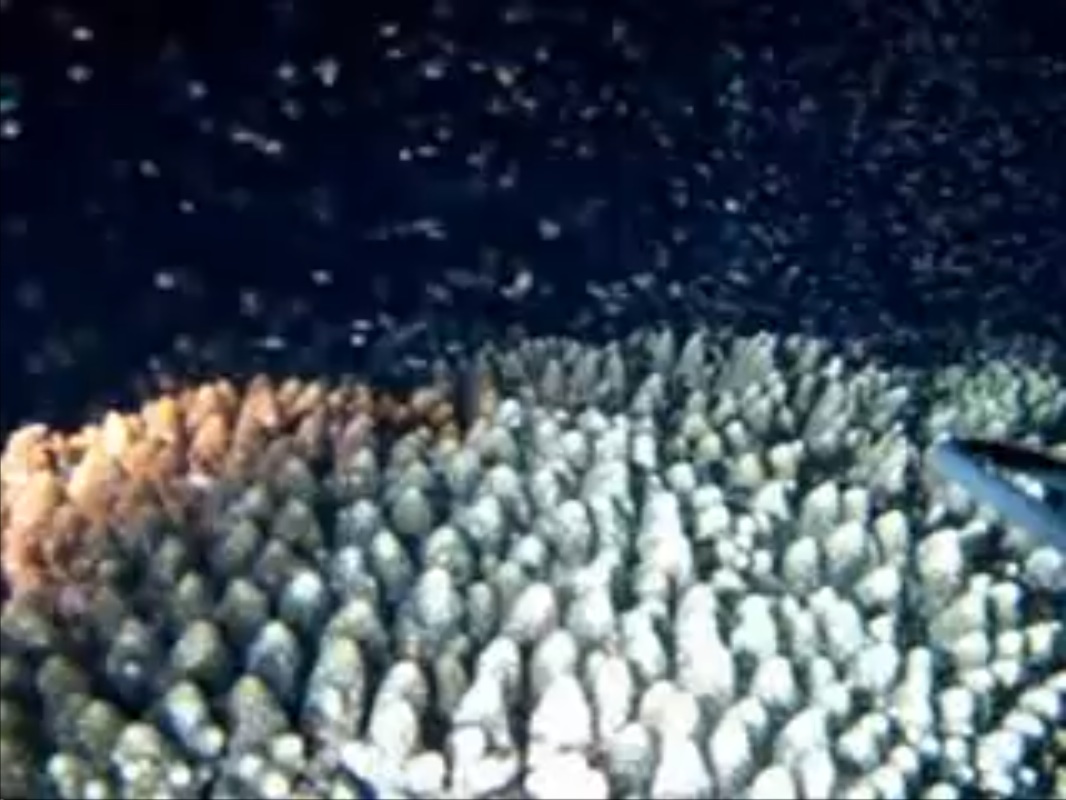
A group of Egyptian scientists have witnessed and filmed the first account of mass coral spawning in the Red Sea. The event last weekend is considered a scientific breakthrough, as mass coral spawning was previously believed to only occur in tropical locations.
Mass spawning is an event of synchronized reproduction, where coral colonies release their gametes – eggs and sperm – simultaneously in large quantities over a short period of time, in order to maximize chances of fertilization.
The mass release is connected to the moon’s cycles, as it occurs around midnight, once a year, two or three days before or after a full moon. It is believed a combination of the moonlight and gravitational pull stimulates the event.
This event involved the Acropora species, a group of common hard corals. It occurred overnight between the 3 and 4 May, before the full moon on 6 May.
Mahmoud Hanafy, a marine biologist for the Hurghada Environmental Protection and Conservation Association (HEPCA), who was part of the team that filmed the event, said that he has been trying to prove the occurrence of mass spawning in the Red Sea for nine years, despite disbelief from scientists around the world.
“Once a year, overnight, we’d find all the corals in spent [post gamete release] condition, but could never pinpoint the exact moment beforehand,” he said. “This time, we set up a film crew, and went diving every night from 10pm – 2am and we caught it, and have now sent the video it to scientific journals around the world.”
The release caused the sea to become clouded by an unidentified reddish substance, and apparently startled unknowing observers the next morning.
The occurrence of mass coral spawning in the Red Sea has magnificent implications with regards to the restoration and rehabilitation of the sea’s deteriorating coral reefs, as now once a year, scientists can collect large quantities of gametes and use them to breed restorative coral in labs.
It is also expected to encourage dive tourism, as the witnessing of mass coral spawning is, in HEPCA managing director Amr Ali’s words, “a diver’s Disneyland.”




